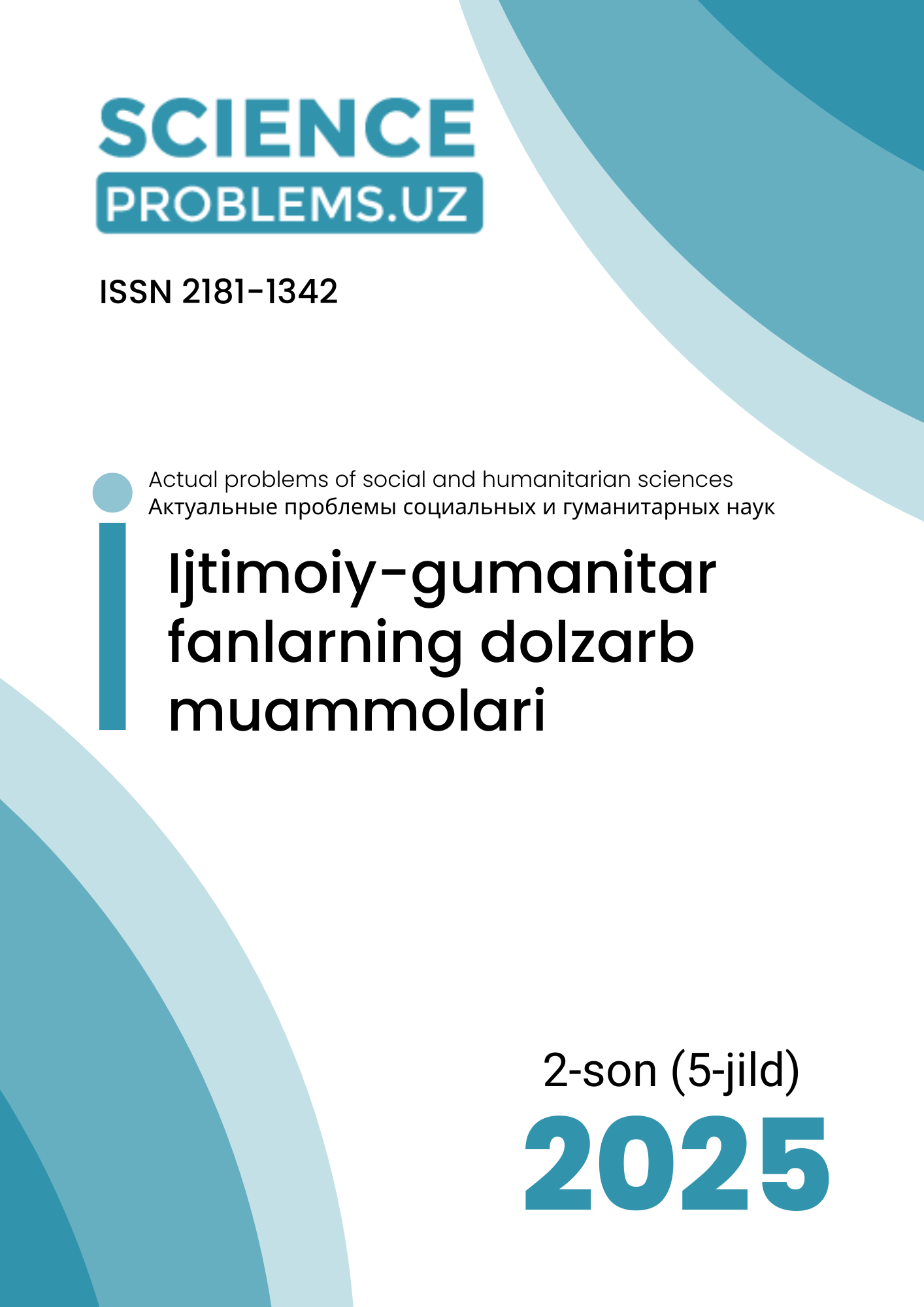TILLARNING FONOLOGIK VA MORFOLOGIK O‘ZARO TA'SIRI
Kalit so'zlar
https://doi.org/10.47390/SPR1342V5I2Y2025N52Kalit so'zlar
morfonologiya, fonologiya, morfologiya, morfonologik oʻzgarishlar, ingliz tili, oʻzbek tili, rus tili, tipologik tahlil.Annotasiya
Ushbu tadqiqot ingliz, oʻzbek va rus tillarida fonologik va morfologik tizimlarning oʻzaro bogʻliqligini qiyosiy tahlil qiladi. Unda asosiy morfonologik oʻzgarishlar koʻrib chiqilib, tillardagi umumiy strategiyalar va oʻziga xos xususiyatlar ochib beriladi.
Manbalar
1. Aronoff, M. (1976). Word Formation in Generative Grammar. Cambridge, MA: MIT Press.
2. Bloomfield, L. (1933). Language. New York: Holt, Rinehart, and Winston.
3. Comrie, B. (2021). Language Universals and Linguistic Typology. Chicago: University of Chicago Press.
4. Johanson, L. (2018). The Structure of Turkic Languages. London: Routledge.
5. Sapir, E. (2014). Language: An Introduction to the Study of Speech. New York: Harcourt, Brace & World.
6. Trubetzkoy, N. S. (1939). Grundzüge der Phonologie. Prague: Travaux du Cercle Linguistique de Prague.
7. Wells, J. C. (1982). Accents of English. Cambridge: Cambridge University Press.
8. Satibaldiyev, E. K. (2022). LANGUAGE INTERACTION RESULTING IN SPEECH INTERFERENCE AND FACILITATION.
9. Сатибалдиев, Э. К. (2022). ЯЗЫКОВОЕ КОНТАКТИРОВАНИЕ: БИЛИНГВИЗМ, ПОЛИЛИНГВИЗМ, ИНТЕРФЕРЕНЦИЯ. In ИНОСТРАННЫЙ ЯЗЫК В ПРОФЕССИОНАЛЬНОЙ СФЕРЕ: ПЕДАГОГИКА, ЛИНГВИСТИКА, МЕЖКУЛЬТУРНАЯ КОММУНИКАЦИЯ (pp. 144-149).








